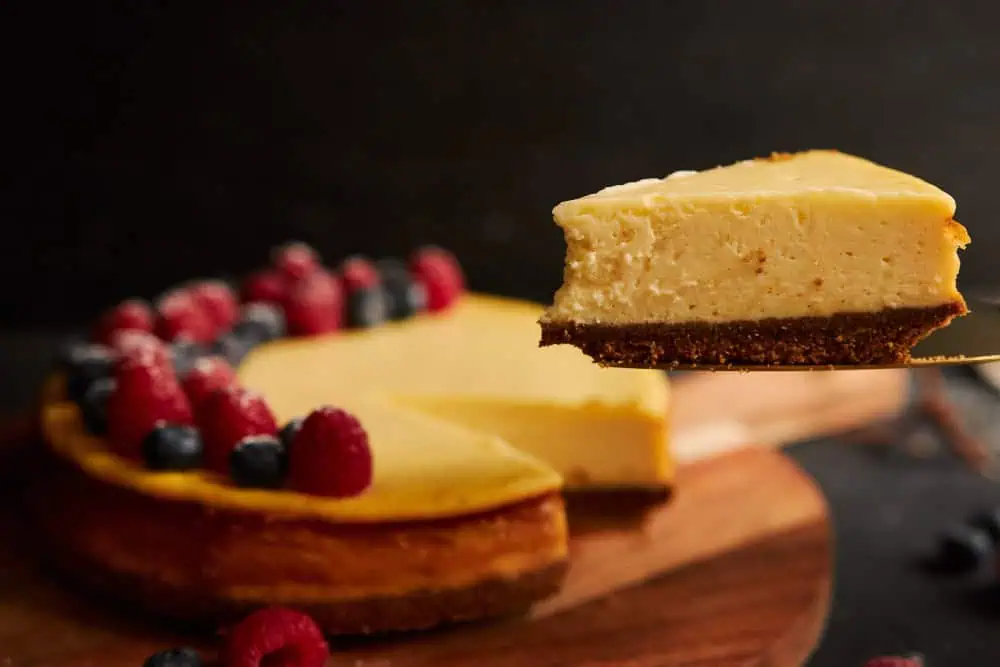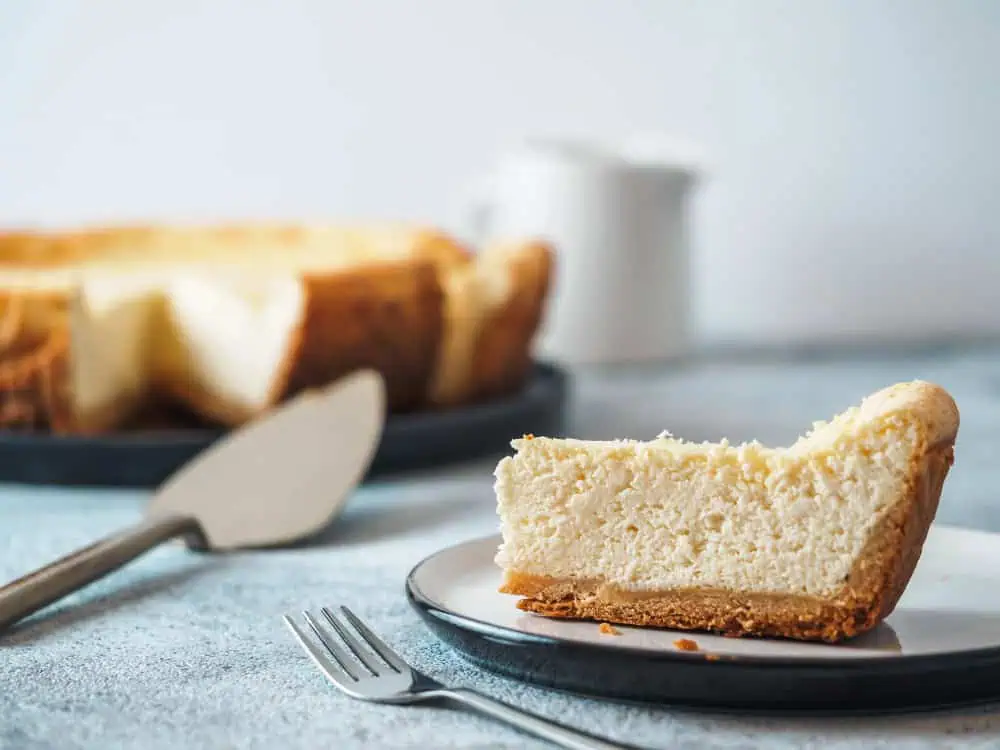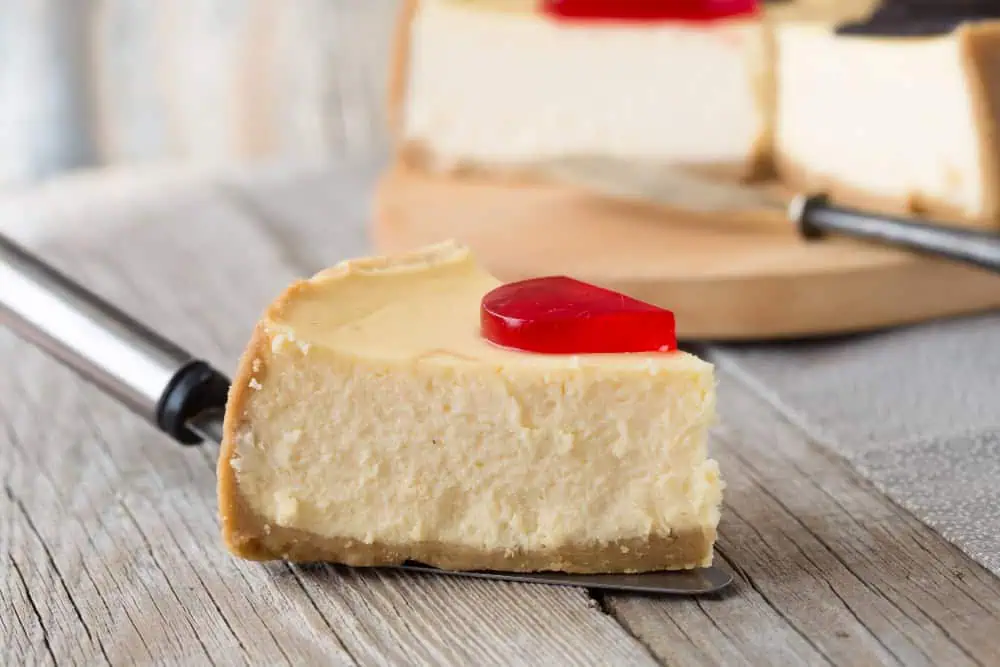If you’ve ever indulged in a slice of cheesecake, you know how rich, creamy, and satisfying it can be. But did you know there are different types of cheesecakes, each with its own unique characteristics? One of the most common questions cheesecake lovers ask is: What is the difference between New York cheesecake and classic cheesecake? While both are delicious, they differ in ingredients, texture, and preparation methods. In this article, we’ll dive deep into the world of cheesecakes, exploring the key differences, similarities, and everything in between.
Whether you’re a home baker, a dessert enthusiast, or just someone curious about cheesecakes, this guide will answer all your questions. Let’s get started!
What Is a Cheesecake?
Before we dive into the differences, let’s first understand what a cheesecake is. Cheesecake is a rich, creamy dessert made primarily from cream cheese, sugar, and eggs, baked on a crust made of crushed cookies, graham crackers, or pastry. It’s a versatile dessert that can be flavored with fruits, chocolate, or other toppings.
Cheesecakes are loved worldwide, but their preparation and style vary depending on the region. Two of the most popular styles are New York cheesecake and classic cheesecake. Let’s explore how they differ.
If you’re looking for a delicious variation, try this Cherry Cheesecake Recipe for a fruity twist.
Key Differences Between New York Cheesecake and Classic Cheesecake
1. Ingredients
The ingredients used in New York cheesecake and classic cheesecake are one of the main factors that set them apart.
- New York Cheesecake:
- Uses a lot of cream cheese, giving it a dense and rich texture.
- Often includes heavy cream or sour cream for added creaminess.
- Sometimes incorporates extra egg yolks for a custard-like consistency.
- Typically has a simple graham cracker crust.
- Classic Cheesecake:
- Uses less cream cheese, resulting in a lighter texture.
- May include ingredients like ricotta cheese, mascarpone, or cottage cheese, depending on the recipe.
- Often flavored with vanilla, lemon zest, or other subtle additions.
- The crust can vary, including options like pastry crust or cookie crust.
2. Texture
The texture of these two cheesecakes is another major difference.
- New York Cheesecake:
- Dense, rich, and creamy.
- Has a velvety smooth consistency that feels indulgent.
- The extra cream cheese and eggs contribute to its signature firmness.
- Classic Cheesecake:
- Lighter and fluffier.
- Can be creamy but not as dense as New York cheesecake.
- The texture may vary depending on the type of cheese used (e.g., ricotta-based cheesecakes are grainier).
3. Baking Method
The baking process also plays a significant role in differentiating these two styles.
- New York Cheesecake:
- Baked at a high temperature initially, then lowered to ensure even cooking.
- Often baked without a water bath, which contributes to its dense texture.
- The top may develop a slight golden color or cracks, which is considered normal.
- Classic Cheesecake:
- Typically baked in a water bath (bain-marie) to prevent cracks and ensure a smooth texture. Learn more about what a water bath is and how it helps in making the perfect cheesecake.
- Baked at a lower temperature for a longer time.
- The result is a more delicate and evenly cooked cheesecake.
4. Flavor Profile
The flavor of each cheesecake is distinct due to the ingredients and preparation methods.
- New York Cheesecake:
- Rich, tangy, and slightly sweet.
- The sour cream or heavy cream adds a subtle tanginess that balances the sweetness.
- The focus is on the pure flavor of cream cheese.
- Classic Cheesecake:
- Mildly sweet and versatile.
- Often flavored with vanilla, citrus, or other subtle ingredients.
- The flavor can vary depending on the type of cheese and additional ingredients used.
5. Crust
The crust is another area where these cheesecakes differ.
- New York Cheesecake:
- Almost always made with a graham cracker crust.
- The crust is simple and serves as a base to highlight the rich filling.
- Classic Cheesecake:
- Can have a variety of crusts, including graham cracker, pastry, or cookie crusts.
- The crust may be thicker or thinner, depending on the recipe.

Why Is New York Cheesecake So Famous?
New York cheesecake is iconic and often considered the gold standard of cheesecakes. Its fame can be attributed to its rich, indulgent texture and pure cream cheese flavor. The dessert became popular in the early 20th century, thanks to Jewish immigrants who brought their cheesecake recipes to New York City. Over time, the recipe evolved, with cream cheese becoming the star ingredient.
Today, New York cheesecake is a staple in bakeries and restaurants across the city and beyond. Its luxurious texture and tangy flavor make it a favorite among dessert lovers.
Variations of Classic Cheesecake
While New York cheesecake has a relatively fixed recipe, classic cheesecake comes in many variations. Here are some popular types:
- Italian Cheesecake:
- Made with ricotta cheese, giving it a lighter and slightly grainy texture.
- Often flavored with citrus zest or almond extract.
- Japanese Cheesecake:
- Light, airy, and almost soufflé-like.
- Combines cream cheese with whipped egg whites for a fluffy texture.
- No-Bake Cheesecake:
- Made without baking, using gelatin or whipped cream to set the filling.
- Lighter and less dense than baked cheesecakes.
- Flavored Cheesecakes:
- Includes options like chocolate, strawberry, pumpkin, or caramel cheesecakes.
- The flavors are often added to the filling or used as toppings.
Learn more about the three main types of cheesecake to expand your dessert knowledge.
How to Choose Between New York Cheesecake and Classic Cheesecake
When deciding between New York cheesecake and classic cheesecake, consider the following:
- Texture Preference:
- If you love dense, creamy desserts, go for New York cheesecake.
- If you prefer something lighter, classic cheesecake is the way to go.
- Flavor Profile:
- For a tangy, rich flavor, New York cheesecake is ideal.
- For a more versatile and mild flavor, choose classic cheesecake.
- Occasion:
- New York cheesecake is perfect for indulgent celebrations.
- Classic cheesecake works well for casual gatherings or when you want a lighter dessert.
Tips for Making the Perfect Cheesecake
Whether you’re making New York cheesecake or classic cheesecake, these tips will help you achieve the best results:
- Use Room Temperature Ingredients:
- Cream cheese, eggs, and other ingredients should be at room temperature for a smooth batter.
- Don’t Overmix:
- Overmixing can incorporate too much air, leading to cracks during baking.
- Bake Low and Slow:
- For classic cheesecake, bake at a low temperature to ensure even cooking.
- Use a Water Bath:
- A water bath helps prevent cracks and ensures a creamy texture.
- Chill Before Serving:
- Cheesecake tastes best when chilled for at least 4-6 hours, allowing the flavors to develop.
- Avoid Opening the Oven Door:
- Opening the oven door can cause temperature fluctuations, leading to cracks. Use the oven light to check on your cheesecake instead.
- Let It Cool Gradually:
- After baking, turn off the oven and let the cheesecake cool inside with the door ajar. This gradual cooling helps prevent cracks.
- Experiment with Flavors:
- Don’t be afraid to add your favorite flavors, such as chocolate, fruit purees, or spices, to customize your cheesecake. For another creamy dessert with a unique twist, explore the secrets of creating the perfect creme brulee.
- Use Quality Ingredients:
- The quality of your cream cheese and other ingredients can significantly affect the final taste. Opt for full-fat cream cheese for the best results.
- Consider Adding a Sour Cream Topping:
- For New York cheesecake, a layer of sour cream mixed with sugar and vanilla can add a delightful tang and creaminess to the top.
Discover whether sour cream or whipping cream is better for cheesecake in this detailed guide.
Popular Toppings for Cheesecake
Toppings can elevate your cheesecake experience, adding flavor and visual appeal. Here are some popular options:
- Fresh Fruits:
- Strawberries, blueberries, raspberries, or sliced peaches add a refreshing touch.
- Fruit Compote:
- A warm or chilled fruit compote can enhance the flavor and add moisture.
- Chocolate Ganache:
- Drizzling chocolate ganache over the top creates a rich, decadent finish. If you enjoy caramelized toppings, learn how to make a creme brulee top for a similar effect.
- Whipped Cream:
- A dollop of whipped cream adds lightness and sweetness.
- Caramel Sauce:
- Drizzling caramel sauce can add a sweet and salty contrast.
- Nuts:
- Chopped nuts, such as pecans or almonds, can add crunch and flavor.
- Crushed Cookies:
- Sprinkling crushed cookies on top can add texture and enhance the crust flavor.
- Coconut Flakes:
- Toasted coconut flakes can add a tropical twist to your cheesecake.
- Mint Leaves:
- Fresh mint leaves can provide a pop of color and a refreshing flavor contrast.
The History of Cheesecake
Cheesecake has a rich history that dates back thousands of years. Here’s a brief overview of its evolution:
- Ancient Greece:
- The earliest known cheesecake recipe comes from ancient Greece, where it was made with simple ingredients like cheese, flour, and honey. It was served to athletes during the first Olympic Games in 776 B.C.
- Roman Influence:
- The Romans adopted the Greek cheesecake and added their own twist, incorporating eggs and baking it. They believed cheesecake had health benefits and served it at various celebrations.
- Medieval Europe:
- During the Middle Ages, cheesecake recipes spread throughout Europe, with variations emerging in different regions. The use of cream cheese became popular in England and France.
- American Adaptation:
- In the early 20th century, cream cheese was introduced in the United States, leading to the creation of the New York cheesecake we know today. Jewish immigrants played a significant role in popularizing this style of cheesecake in New York City.
- Modern Variations:
- Today, cheesecake has evolved into countless variations, from no-bake versions to vegan options, catering to diverse dietary preferences and tastes.
Healthier Cheesecake Alternatives
If you’re looking for a healthier version of cheesecake, consider these alternatives:
- Greek Yogurt Cheesecake:
- Substitute cream cheese with Greek yogurt for a lighter, protein-packed option.
- Vegan Cheesecake:
- Use cashews, coconut cream, or tofu as a base for a dairy-free cheesecake.
- Low-Carb Cheesecake:
- Use almond flour for the crust and sugar substitutes like erythritol or stevia for a low-carb version.
- Fruit-Based Cheesecake:
- Incorporate pureed fruits into the filling for natural sweetness and flavor.
- Chia Seed Cheesecake:
- Use chia seeds mixed with almond milk as a base for a nutritious, no-bake cheesecake.

FAQs About New York Cheesecake and Classic Cheesecake
1. What makes New York cheesecake different?
New York cheesecake is denser and richer than classic cheesecake, thanks to its high cream cheese content and the addition of heavy cream or sour cream.
2. Is New York cheesecake better than classic cheesecake?
It depends on personal preference. New York cheesecake is ideal for those who love rich, creamy desserts, while classic cheesecake is better for those who prefer a lighter texture.
3. Can I make New York cheesecake without a graham cracker crust?
Yes, you can use other crust options like cookie crumbs or even a pastry crust, but graham cracker crust is the traditional choice.
4. What is the best cheese for classic cheesecake?
Cream cheese is the most common choice, but ricotta, mascarpone, or cottage cheese can also be used for variations.
5. Why does my cheesecake crack on top?
Cracks can occur due to overmixing, baking at too high a temperature, or not using a water bath. To avoid cracks, bake low and slow and let the cheesecake cool gradually.
6. Can I freeze cheesecake?
Yes, both New York and classic cheesecakes freeze well. Wrap them tightly in plastic wrap and store in an airtight container for up to 2 months.
7. How long does cheesecake last in the fridge?
Cheesecake can last in the refrigerator for about 5-7 days when stored properly in an airtight container.
8. What’s the best way to serve cheesecake?
Cheesecake is best served chilled. Slice it with a hot knife for clean cuts, and consider garnishing with fresh fruit or whipped cream.
9. Can I make cheesecake in advance?
Yes, cheesecake can be made a day or two in advance. In fact, it often tastes better after sitting in the fridge for a while, as the flavors meld together.
10. What should I do if my cheesecake is too sweet?
If your cheesecake turns out too sweet, consider serving it with a tart fruit topping or a dollop of unsweetened whipped cream to balance the flavors.
Conclusion
What is the difference between New York cheesecake and classic cheesecake? The answer lies in their ingredients, texture, baking methods, and flavor profiles. New York cheesecake is dense, rich, and indulgent, while classic cheesecake is lighter and more versatile. Both are delicious in their own way, and the choice ultimately comes down to personal preference.
Whether you’re a fan of the tangy richness of New York cheesecake or the delicate flavors of classic cheesecake, there’s no denying that cheesecake is one of the most beloved desserts in the world. So, why not try making both and decide for yourself which one you prefer? Happy baking!
By following this guide, you’ll not only understand the differences between these two iconic desserts but also be equipped to make the perfect cheesecake at home. Don’t forget to share your creations and let us know which style you love the most!

